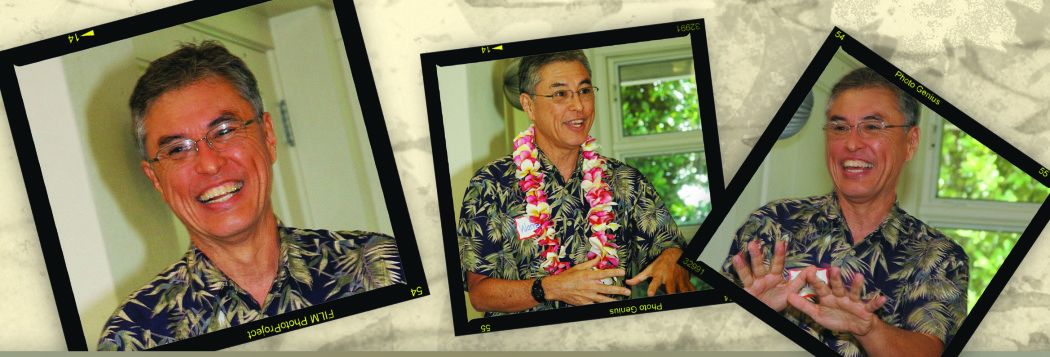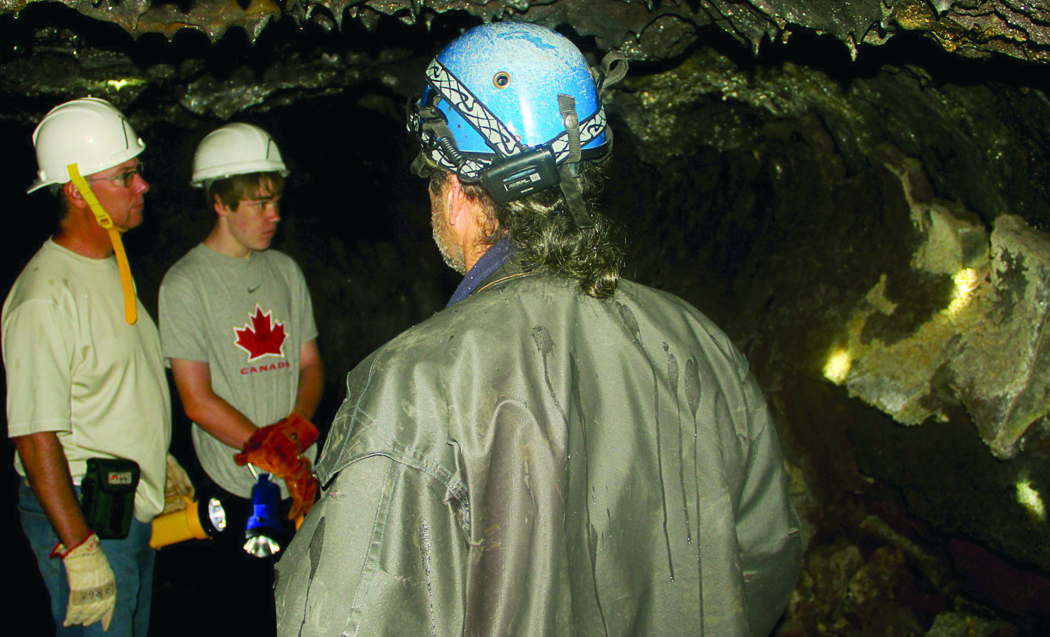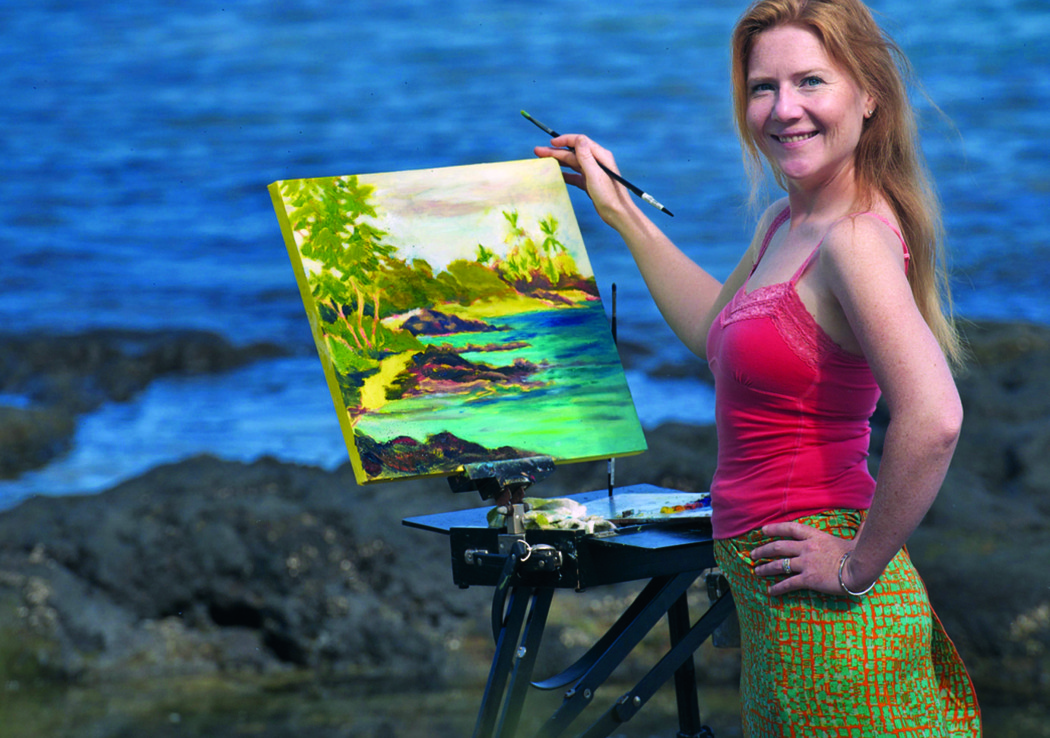
Then & Now: Kau‘pulehu and Kona Village Resort
 By Pete Hendricks
By Pete Hendricks
As the schooner New Moon entered Kahuwai Bay in 1961, only the ghosts of the deserted village of Ka’upulehu were present, but the bay had been an important chapter in the story of the Hawaiian Kingdom.
In 1790, the Ka’upulehu ahupua’a, or land division, in Kekaha, North Kona, was the residence of Kame‘eiamoku, a high ali’i (chief). A supporter and relative of Kamehameha I, Kame‘eiamoku had been insulted by Captain Simon Metcalf, of the visiting fur trading ship Eleanora. Metcalf had been coasting along Hawai‘i Island, trading with villages for provisions. After the insult, Kameeiamoku resolved to attack the next foreign ship he encountered. By coincidence, the next ship was a small topsail schooner, commanded by Simon’s son, Thomas Metcalf. Everyone on the Fair American was killed in the attack except the first mate, Isaac Davis, who later became a trusted advisor to Kamehameha I. Kame‘eiamoku probably brought Fair American to Kahuwai Bay for a short time.
The Fair American was soon incorporated by Kamehameha into the growing Hawaiian fleet, which would include western ships as well as hundreds of double-hull canoes, with cannons and swivel guns like those carried by the Fair American. Several four-pound cannonballs were recovered from the beach at Kahuwai Bay in modern times, supporting evidence for the short stay of Fair American after her capture.
Kekaha, the region surrounding Ka’upulehu, is an arid place, shielded from the prevailing northeast tradewinds by massive mountains, with usually moderate offshore and onshore breezes daily. However, the usually-dry land adjoins ocean with rich marine resources, and Ka’upulehu and its village were blessed with springs and brackish water ponds.
The eruptions of Hualalai mountain in 1800-1801 and subsequent lava flows changed the land and coastline of Ka’upulehu. In the following century and a half, a new land ownership system, with a western market economy and employment, hastened the end of traditional Hawaiian subsistence villages like Ka’upulehu.
One-hundred-seventy-one years after the Fair American incident, former oil driller Johnno Jackson and his wife Helen sailed another schooner, New Moon, out from California in search of new horizons. Anchored in Kahuwai Bay, Jackson realized the potential of Ka’upulehu, with its beautiful bay and pristine encircling reef. Jackson had envisioned a Polynesian village while exploring along the west coast of Hawai‘i Island. The vision included a simple but elegant statement in quiet leisure, reflecting the styles of Polynesian cultures. The Jacksons’ visit to Kahuwai Bay began a unique resort for Hawai‘i and a model for similar tourist destinations throughout the Pacific islands.
When Jackson decided that Ka’upulehu was the place for his dream, he faced an enormous challenge. No electricity, no potable water, no overland access. There were no roads; unless you picked your way very slowly by 4X4 vehicle down from Mamalahoa Highway. Queen Ka’ahumanu Highway was many years in the future. There was no communication; a portable radio provided the link. Sometimes it was easier to call a distant Pacific island than to reach Kailua-Kona. But Johnno Jackson was a “can-do” guy. He obtained a lease for the property at Ka’upulehu on a handshake from Bishop Estate, and proceeded to build a resort.
Anything large or heavy would be brought from Kawaihae Harbor, 18 miles north, by boat. A WWII surplus landing craft became the cargo carrier.
Critical to the operation was getting people in and out, not only builders but guests and staff. An airstrip was first priority. When complete, the Kona Village airstrip was a seven-minute flight from Old Kona Airport. The first Village plane was a single-engine, six-seater.
By 1962, Johnno had 25 “hales” in service, and by 1966, 47 units comprised the Village. By that time, Jackson had really run out of money. Signal Oil Company, Jackson’s backer, took over ownership of Kona Village.
The new owners, supportive of Jackson’s vision from the beginning, brought in Angus Coombs as General Manager, and Fred Duerr, both from the old Pacific Empress hotel in Kailua-Kona.
Fred Duerr, who became longest-serving general manager, in a recent interview, recalled his first impression of Kona Village, thinking, “This is like Gilligan’s Island.” One of Duerr’s first jobs at the Village was to determine which guests were paying and which guests were just “friends” of Jackson. Regulars among first guests were airline pilots and crew members he had met and invited to come and stay—at no charge and as long as they wanted. Others were people Jackson had met in his travels and invited to stay at the Village. He had forgotten some people he had invited, a challenge for the new execs of the Village.
Duerr remembers the communications system too. There was one radiophone, mobile 442, and a bullhorn to page others on the Village grounds. No flights in or out after dark. Transport improved with the addition of Royal Hawaiian Air Service, an inter-island commuter carrier, with its twin engine 306’s.
Barbara Campbell started at Kona Village in 1966 after Angus Coombs asked her to help as secretary for a little while. Dhe related that at the Village, “Everybody did everything,” so she immediately pitched in with “everything,” including cooking when the chef missed his shift.
In the early days, the Kona Village, laundry was sent by air to Kailua-Kona. Barbara tells the story of her first laundry flight experience. Dirty laundry was loaded first in the rear of the plane, then passengers climbed into the little single engine craft. Barbara climbed up on the landing wheel and into the cockpit of the plane, then started to close the door. The pilot said: “Don’t close the door ’till I tell you.” Just as the plane was lifting off the ground, the pilot said, “Close the door.” Barbara realized that closing the door at the last minute lessened the smell of riding with the dirty laundry in that little cockpit.
In the early years, Barbara said, everyone had to be flexible and innovative. The book Don’t Stop the Carnival, about a similar resort in the Caribbean, described the early Kona Village closely. The wedding program, started by Barbara, now includes hundreds of couples who have started their married life at Kona Village, including the model Christie Brinkley and comedian Arte Johnson. Barbara retired from Kona Village as sales and marketing director after serving for 23 years. Both Barbara and Fred Duerr mentioned the difficult challenges, but highlighted the “fun” of working at the Village.
Johnno Jackson returned to Kona Village in 1984 after an absence of 17 years. Jackson had wanted to visit during those years, but was concerned that his Eden would no longer be the same. “On the contrary,” he said during his visit, “you’ve accomplished everything I originally set out to do.” Throughout the life of the Kona Village there has been a priority to respect and learn about the legacy of Ka’upulehu and to help include guests in the process.
Kona Village grew to 125 units, still with no telephones, no TV, and an ambience unmatched in the resort world. Roads were improved and access became easier. The Village became popular with celebrities, statesmen, and others seeking its magic and its privacy.
The quiet village atmosphere, the bay, the ponds, the swimming pools, the petroglyphs, and respect for the host Hawaiian culture have been factors in the success of Kona Village Resort, whether guests stayed for days or for weeks. But the most important asset of the Kona Village experience has always been the staff, many of whom have been at the Village since its early days. The staff insured that each guest became part of the Kona Village ohana.
Johnno Jackson’s beloved schooner New Moon became the famous Shipwreck Bar, having blown ashore in a storm. Shipwreck Bar has survived many other storms and tsunamis over the years, including a recent destructive seismic wave. But the tsunami of March 11, 2011, caused major damage along the North and South Kona shoreline, including Kona Village. Hopefully, the Kona Village at Kahuwai Bay will return to offer its unique setting and experience to newcomer and kama’aina alike. ❖
Contact writer Pete Hendricks at oldsaltp@yahoo.com


